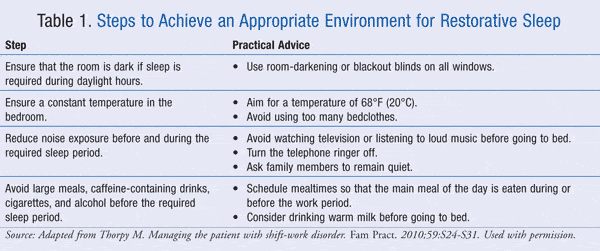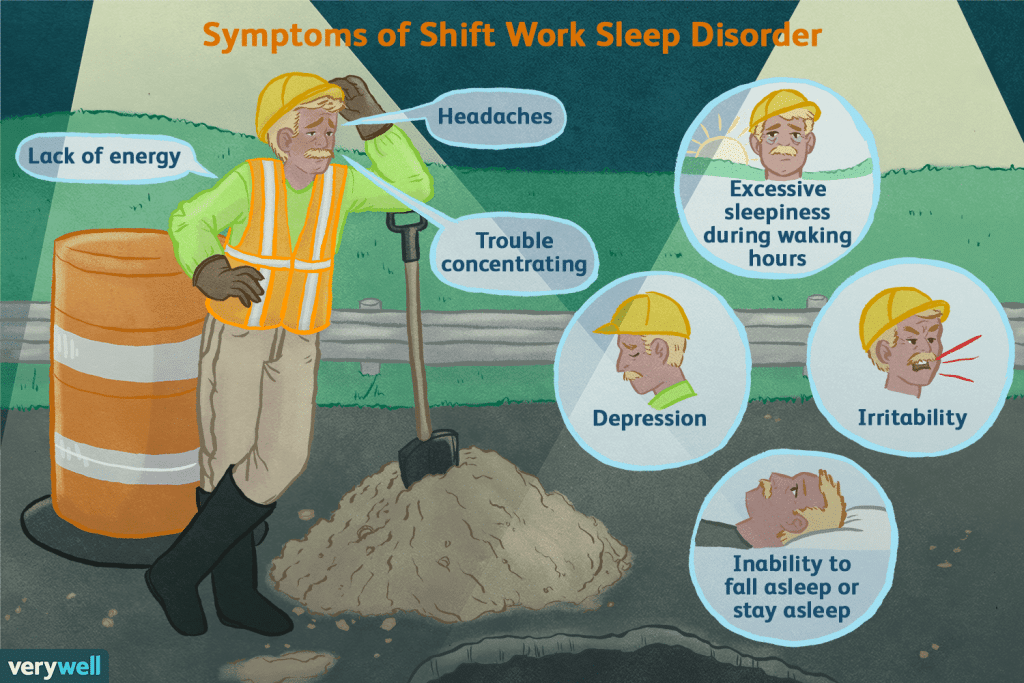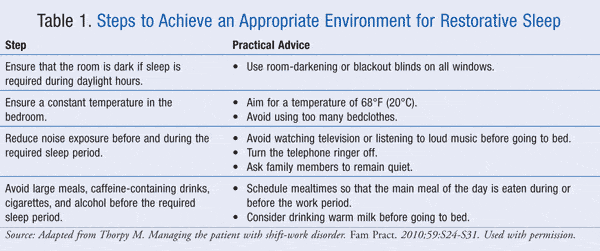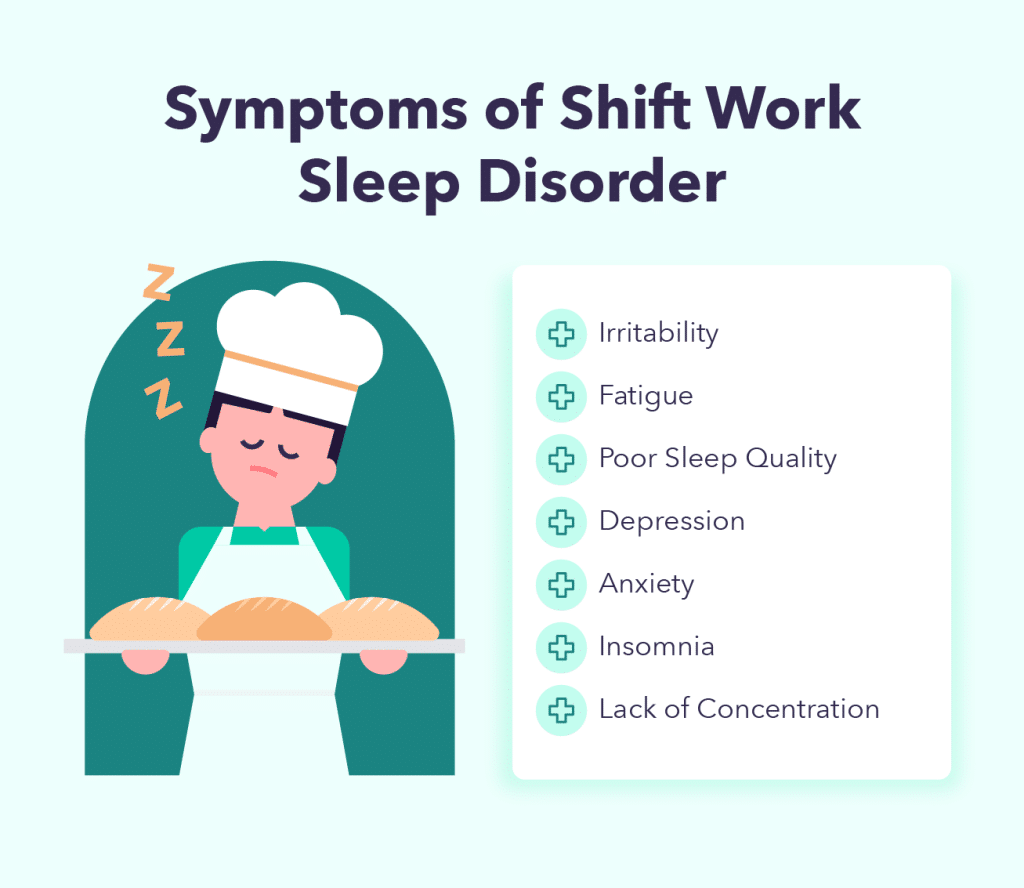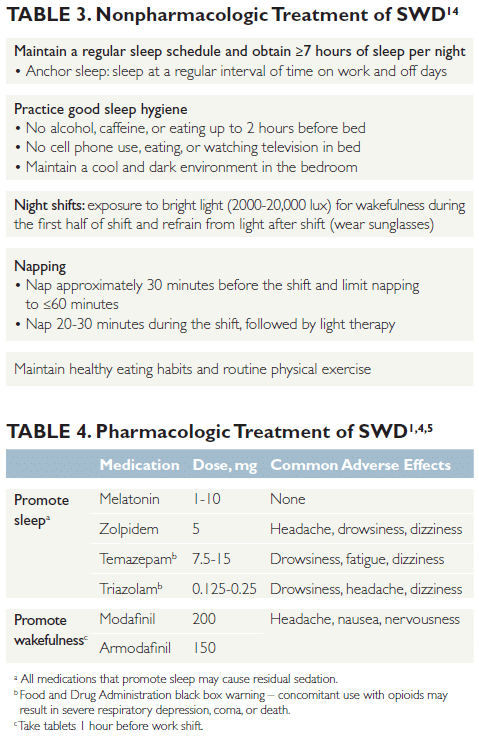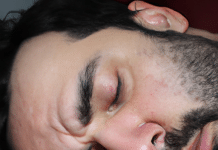Shift work sleep disorder can be challenging to manage, but with the right strategies, we can improve our sleep and minimize its impact on our daily lives.
From creating a sleep-friendly environment to establishing a consistent sleep schedule, various techniques can help us effectively manage this sleep disorder.
In this article, we will explore practical tips and techniques that can make a significant difference in our ability to get quality sleep despite the challenges of working irregular hours.
Whether we’re night owls or early birds, balancing work and sleep is crucial for our overall well-being. So, let’s dive into the world of managing shift work sleep disorder and discover ways to reclaim a restful night’s sleep.
Review contents
Understanding Shift Work Sleep Disorder
Shift work sleep disorder (SWSD) is a condition that affects individuals who work non-traditional hours, such as night shifts or rotating shifts. It occurs when the body’s natural sleep-wake cycle is disrupted, leading to difficulty getting sufficient and restful sleep. This disorder can have various causes and is known to impact physical and mental health significantly. Understanding the causes and effects of SWSD is crucial in finding effective methods to manage this sleep disorder.
Causes of Shift Work Sleep Disorder
The leading cause of shift work sleep disorder is the misalignment between work schedules and the body’s internal circadian rhythms. Our bodies have an internal clock that regulates sleep and wakefulness, and it is naturally programmed to sleep during the night and be awake during the daytime. Shift work disrupts this natural pattern, leading to difficulty in adjusting and getting enough sleep during non-traditional hours. Other contributing factors include poor sleep hygiene, high-stress levels, and a lack of exposure to natural light.
Effects of Shift Work Sleep Disorder on Health
SWSD can have significant effects on an individual’s overall health and well-being. The chronic sleep deprivation associated with this disorder can weaken the immune system, increasing the risk of infections and other illnesses. It can also lead to mood disturbances, such as irritability, depression, and anxiety. Furthermore, SWSD has been linked to an increased risk of cardiovascular diseases, obesity, diabetes, and gastrointestinal issues. Addressing and managing this disorder is crucial to minimize the potential health consequences.
Impact on Daily Life
The impact of SWSD extends beyond health implications and can significantly affect an individual’s daily life. The irregular sleep patterns associated with shift work can make maintaining regular social and family interactions challenging. It may lead to feelings of isolation and make it challenging to balance work responsibilities with personal commitments. Additionally, the fatigue and sleepiness experienced as a result of SWSD can impair cognitive function, memory, and decision-making skills. Effective management techniques can be implemented to mitigate these challenges and improve day-to-day functioning.
Creating a Sleep-Friendly Environment
Establishing a sleep-friendly environment is crucial for managing SWSD and optimizing the quality and quantity of sleep obtained during non-traditional hours. There are several key factors to consider when creating such an environment.
Maintaining a Consistent Sleep Schedule
Maintaining a consistent sleep schedule is one of the most critical aspects of managing SWSD. A regular sleep routine helps regulate the body’s internal clock and makes it easier to fall asleep and wake up consistently. It is essential to prioritize sleep and plan regular sleep windows, even on off-days, to ensure optimal rest.
Optimizing the Sleep Environment
Creating a sleep-friendly environment involves making the bedroom a comfortable and relaxing space. Ensure that the room is dark, quiet, and at a cool temperature. Invest in blackout curtains or an eye mask to block out daylight, and use earplugs or a white noise machine to minimize noise disruptions. Additionally, choosing a comfortable mattress and pillow can significantly improve sleep quality.
Minimizing Noise and Light Disruptions
Noise and light disruptions can be particularly challenging for individuals with SWSD, especially if they are attempting to sleep during daytime hours. Minimize disruptions by using earplugs, playing soothing music or nature sounds, or using a white noise machine to mask external noises. Install blackout curtains or a sleep mask to block out intrusive light, ensuring a restful sleep environment.
Using Relaxation Techniques before Sleep
Engaging in relaxation techniques before sleep can help promote a sense of calm and prepare the body for rest. Try deep breathing exercises, meditation, or progressive muscle relaxation to reduce stress and promote relaxation. Establishing a bedtime routine incorporating these techniques can signal to the body that it is time to unwind and prepare for sleep.
This image is the property of www.verywellhealth.com.
Healthy Habits for Better Sleep
In addition to creating a sleep-friendly environment, adopting healthy habits can significantly enhance sleep quality and manage SWSD. The following strategies can be incorporated into daily routines to promote better sleep.
Establishing a Pre-Sleep Routine
Developing a pre-sleep routine helps signal the body that it is time to wind down and prepare for sleep. This routine should include activities that promote relaxation, such as reading a book, taking a warm bath, or practicing gentle stretching exercises. Avoid stimulating activities, such as using electronic devices or engaging in intense exercise close to bedtime, as they can interfere with sleep.
Engaging in Regular Exercise
Regular exercise has numerous benefits for sleep, including reducing stress, promoting relaxation, and improving overall sleep quality. Engage in moderate-intensity aerobic exercise, such as walking or cycling, for at least 30 minutes most days of the week. However, avoiding exercising too close to bedtime is essential, as it can elevate heart rate and make it difficult to fall asleep.
Avoiding Stimulants and Heavy Meals before Bedtime
Consuming stimulants, such as caffeine and nicotine, close to bedtime can interfere with sleep. Avoid these substances in the evening or at least several hours before bed. Additionally, heavy meals before bedtime can cause discomfort and disrupt sleep. Opt for a light, balanced dinner and avoid consuming large quantities of food within a few hours of sleep.
Limiting Screen Time before Sleep
The blue light emitted by electronic devices, such as smartphones, tablets, and computers, can interfere with the body’s natural sleep-wake cycle. Limit screen time in the evening, ideally at least an hour before bed. If using electronic devices is necessary, enable the device’s nighttime mode or use blue light-blocking glasses to reduce the impact on sleep.
Strategies for Napping Effectively
Snapping strategically can be valuable for managing sleepiness and fatigue during shift work. However, it is essential to adopt effective strategies to ensure naps do not disrupt regular sleep patterns or interfere with nighttime sleep.
Planning Strategic Naps during Shift Breaks
Identify appropriate times during shift breaks to incorporate short naps. Aim for 10-30 minutes, as shorter naps can provide a quick energy boost without causing grogginess upon waking. Schedule naps strategically in the middle of the shift to combat mid-shift fatigue and increase alertness.
Adopting the Optimal Nap Length
The length of a nap can significantly impact how one feels upon waking. Longer naps can result in sleep inertia, causing grogginess and difficulty returning to full wakefulness. Keep naps short to avoid this effect and ensure the nap does not interfere with the ability to fall asleep at night.
Creating a Nap-Friendly Environment
Like optimizing the sleep environment, creating a nap-friendly environment is essential for effective napping during shift work. Use earplugs, white noise machines, and eye masks to minimize noise and light disruptions. Ensure the space is comfortable, relaxed, and free from distractions. Set an alarm to avoid oversleeping and disrupting the regular sleep schedule.
This image is the property of www.uspharmacist.com.
Managing Sleep during Off-Days
Maintaining a routine during off-duty days is crucial for managing SWSD and ensuring a smooth transition between work schedules. The following strategies can help regulate sleep and promote alertness during these periods.
Establishing a Routine for Off-Duty Days
While it may be tempting to switch to a traditional sleep schedule during off-days completely, it is recommended to maintain consistency by sticking to a similar sleep routine as on workdays. This helps regulate the body’s internal clock and minimize the disruption to the sleep-wake cycle.
Transitioning between Different Work Schedules
Planning and preparing for these transitions is essential for individuals who work rotating shifts or frequently switch between day and night shifts. Gradually adjust sleep and wake times by going to bed slightly earlier or later each day leading up to the schedule change. This gradual shift helps the body adjust more efficiently and minimize sleep-related impact.
Avoiding Excessive Daytime Sleeping
While it may be tempting to catch up on lost sleep during off-days, excessive daytime sleeping can disrupt the body’s sleep-wake cycle and make it difficult to fall asleep at night. Limit daytime napping to short power naps to combat sleepiness, while still allowing for restful sleep during the nighttime hours.
Nutrition and Sleep
Proper nutrition plays a crucial role in managing SWSD and promoting quality sleep. Adopting a balanced diet and making mindful choices regarding food and drink can significantly support overall sleep health.
Eating a Balanced Diet
A balanced diet rich in fruits, vegetables, whole grains, lean proteins, and healthy fats provides the essential nutrients for optimal sleep. Avoid excessive processed foods, sugary snacks, and high-fat meals, as they can negatively impact sleep and overall health.
Avoiding Heavy Meals during Night Shifts
It is essential to be mindful of food choices during night shifts, incredibly close to bedtime. Heavy meals can lead to indigestion and discomfort, making it difficult to fall asleep. Opt for lighter, nutritious options and eat small, frequent meals to support energy levels without interfering with sleep.
Choosing Sleep-Supportive Foods
Certain foods can promote restful sleep by containing compounds that aid relaxation and facilitate the production of sleep-regulating hormones. To support sleep quality, incorporate bananas, cherries, almonds, chamomile tea, and whole-grain carbohydrates.
Hydrating Properly
Maintaining proper hydration is crucial for overall health and sleep quality. Avoid excessive caffeinated beverages, such as coffee or energy drinks, during the latter part of the shift, as they can interfere with sleep. Opt for water and herbal tea instead to stay hydrated without the stimulating effects of caffeine.
This image is the property of blog.mint.com.
Light Exposure and Sleep Regulation
Light exposure plays a vital role in regulating the body’s internal clock. Managing exposure to natural and artificial light during shift work can help optimize sleep patterns and promote alertness when needed.
Managing Exposure to Natural Light during Shifts
During night shifts, limiting exposure to natural light during the latter part of the shift is essential, especially before heading to bed. Use blackout curtains or wear darkened sunglasses during the commute home to signal to the body that it is time to wind down and prepare for sleep.
Using Light Therapy to Adjust Circadian Rhythm
Light therapy involves using specific types and intensities of light to regulate the body’s internal clock. Utilize a light therapy box or lamp during the first part of the shift (for those working night shifts) or upon waking to promote alertness and reset the circadian rhythm. Consult a healthcare professional for guidance on the appropriate light therapy regimen.
Reducing Exposure to Bright Light before Sleep
Bright light, the blue light emitted by electronic devices, can interfere with the body’s production of melatonin, the hormone that regulates sleep. Minimize exposure to bright light at least an hour before bed to promote melatonin production and facilitate the transition into restful sleep.
Coping with Fatigue and Sleepiness
Shift work often results in fatigue and sleepiness, which can be challenging to overcome during work hours. Employing various strategies can help manage fatigue and promote alertness throughout shifts.
Staying Active and Alert during Shifts
During shift breaks, regular physical activity, such as stretching or taking short walks, can promote blood circulation and prevent lethargy. Staying mentally engaged by actively participating in work tasks, maintaining social interactions, or listening to energetic music can also combat fatigue and increase alertness.
Using Caffeine Strategically
Caffeine can be a valuable tool for combating sleepiness and maintaining alertness during shifts. However, it is essential to use caffeine strategically to avoid disrupting sleep later on. Consume caffeinated beverages in moderation and avoid consumption towards the end of the shift or close to bedtime.
Taking Short Breaks to Rejuvenate
Short breaks throughout the shift can provide an opportunity to rejuvenate and recharge. Use these breaks to engage in activities that boost energy and alertness, such as stretching, breathing exercises, or listening to energizing music. Stepping away from work tasks and changing the environment can also help combat fatigue.
Incorporating Bright Light Exposure
During work hours, exposure to bright light, such as natural daylight or artificial light therapy, can promote alertness and help regulate the body’s internal clock. Take breaks outside, near windows, or under bright lights to stimulate wakefulness. However, for night shift workers, it is essential to limit exposure to bright light during the latter part of the shift to maintain optimal sleep quality.
This image is the property of www.clinicaladvisor.com.
Seeking Professional Help
In some cases, managing SWSD may require professional assistance. Consulting a sleep specialist can provide valuable insights and personalized recommendations for managing the disorder. Additionally, medication options may be explored to improve sleep quality and regulate the sleep-wake cycle. Therapy or counseling can be beneficial for addressing any underlying psychological factors contributing to sleep difficulties. Joining support groups can also provide a sense of community and shared experiences, allowing individuals to find guidance and encouragement from others going through similar challenges.
Adapting to Shift Work
Adapting to shift work requires a proactive approach and involves evaluating the suitability of shift work, adjusting schedules, communicating effectively, and optimizing work breaks.
Evaluating the Suitability of Shift Work
Individuals must assess their suitability for shift work, considering their sleep preferences, health conditions, and overall well-being. Not everyone thrives in non-traditional work hours, and it may be necessary to explore alternative work arrangements if SWSD persists despite management strategies.
Adjusting Shift Schedules
Consider adjusting shift schedules to align with personal sleep preferences and optimize sleep quality if possible. Explore the possibility of negotiating alternative shift patterns that provide more consistent hours or allow more extended recovery periods between shifts.
Communicating with Coworkers and Supervisors
Open communication with coworkers and supervisors is essential for managing SWSD effectively. Educate colleagues and supervisors about the challenges associated with the disorder and work together to create a supportive work environment that accommodates individual sleep needs and promotes overall well-being.
Optimizing Work Breaks
Use work breaks effectively to rest, recharge, and engage in activities that promote wakefulness. Divide breaks into shorter intervals throughout the shift to prevent fatigue and maintain alertness. Incorporate relaxation techniques, light physical activity, or social interaction during breaks to optimize energy levels and combat sleepiness.
In conclusion, managing shift work sleep disorder requires a comprehensive approach that addresses the underlying causes, establishes a sleep-friendly environment, incorporates healthy habits, adopts effective coping strategies, and seeks professional help when necessary.
By understanding the impact of SWSD on health and daily life and implementing proactive management techniques, individuals can optimize their sleep quality and overall well-being while navigating the demands of shift work.
This image is the property of cdn.shrm.org.

